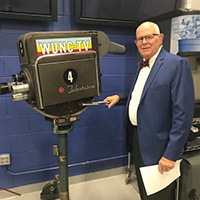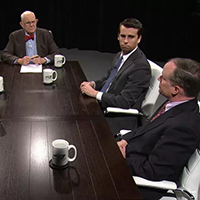Show us the money: NC needs a searchable database for all state spending
Published February 13, 2025
By Donna King
In 2008, the John Locke Foundation released its Transparency Report Card, evaluating how well North Carolina’s state agencies, cities, counties, and school districts made financial information available online. The findings were concerning — seven state agencies received failing grades, and 20 out of 22 earned no better than a D-plus. Much of the state’s budget and spending data was either difficult to access, incomplete, or unavailable to the public. At the time, North Carolina lagged behind in providing taxpayers with the tools needed to track how their money was spent.
Since then, the North Carolina state government’s efforts to improve spending transparency, such as the “open budget” website, have faced mixed reviews. The Open Budget Portalprovides a detailed view of state expenditures and revenues. While the site is a praiseworthy attempt at transparency, it has been criticized for being cumbersome and difficult to navigate, particularly for individuals who don’t already know exactly what they are searching for. For those of us involved in analyzing government spending, it is not particularly useful, as it is challenging to find detailed information without significant effort. It is also likely that most taxpayers are unaware of its existence.
The Office of the State Controller’s long-standing resource, the Annual Comprehensive Financial Report (ACFR), offers an overview of the state’s financial health. It provides a more useful and detailed breakdown of historical spending, as well as debt. Although the report is large and complex, it becomes more manageable once you become familiar with its structure, but that is generally the expertise of professional financial analysts. It can hardly be considered a user-friendly resource for rank-and-file taxpayers who want to see where their money is going, while holding down their own jobs.
There also remains a significant gap in tracking federal funds flowing into the state and understanding how they are spent. That has never been more apparent than in the massive COVID-era education and public safety spending, when millions of federal dollars from the American Rescue Plan flowed into the state with little tracking beyond audits. Last month, an audit of post-pandemic academic outcomes in the National Assessment of Educational Progress (NAEP), known as the “nation’s report card,” showed North Carolina’s student math and reading scores fell from seventh in the country in 2019, to 29th in 2022. Continuously tracking that spending allows for adjustments as outcomes are evaluated.
There is still much work to be done to ensure true accountability to taxpayers, if the state is serious about fiscal responsibility and government oversight. The new White House administration certainly seems serious about it. A survey from Trafalgar/Insider Advantage this week found that Trump is enjoying a 54% approval rating right now, with DOGE not far behind.
“The survey indicates that Elon Musk and his DOGE department enjoy overwhelming support from Republican voters and an overall plus-five point approval rating among all registered voters,” the poll analysis read.
The public support that DOGE has garnered for its investigations indicates that the iron is hot in public support for accountability tools and North Carolina could lead by example.
North Carolina’s state legislature also has some room to grow in pursuit of transparency. Recent commitments to unveiling the legislative process are commendable. Livestreaming committee meetings and NC House sessions to YouTube allows media, taxpayers, and other stakeholders to tune in. The next logical step would be to store recordings on the NC House and NC Senate YouTube channels. Right now, if you miss the meeting live or there are multiple going at once, the only way to get a recording is to visit the legislative library in Raleigh and get the video downloaded to a thumb drive.
Carolina Journal and other news outlets are watching closely for legislative action on a 2023 budget provision granting lawmakers discretion over destroying records, limiting public access to vital legislative information. In 2023, the General Assembly received the “Black Hole Award” for that provision. Additionally, the allocation of state money into “Reserve Fund” buckets raises concerns about the lack of transparency in how these funds are spent and makes it difficult for all but professional budget hawks to track government priorities.
While North Carolina has made strides, its current systems remain inadequate for true transparency. To ensure that taxpayers can fully track how their money is spent, the state needs a centralized, user-friendly transparency portal that provides clear, up-to-date financial information.
A modern system could include real-time tracking, allowing citizens to view government spending as it happens, along with searchable databases that categorize expenses by department, agency, and specific projects. Data visualization tools could help simplify complex financial information, and the system should integrate with existing financial structures to ensure accurate, up-to-date data. The closest taxpayers have today to such a system is the North Carolina state controller’s monthly General Fund report which itemizes state budget revenue and expenditures, albeit several months after the fact.
It would be no small, or cheap, undertaking, but a transparent government is a more accountable and effective government. Increasing transparency through accessible online databases not only fosters greater public trust but also enables effective oversight for lawmakers.







